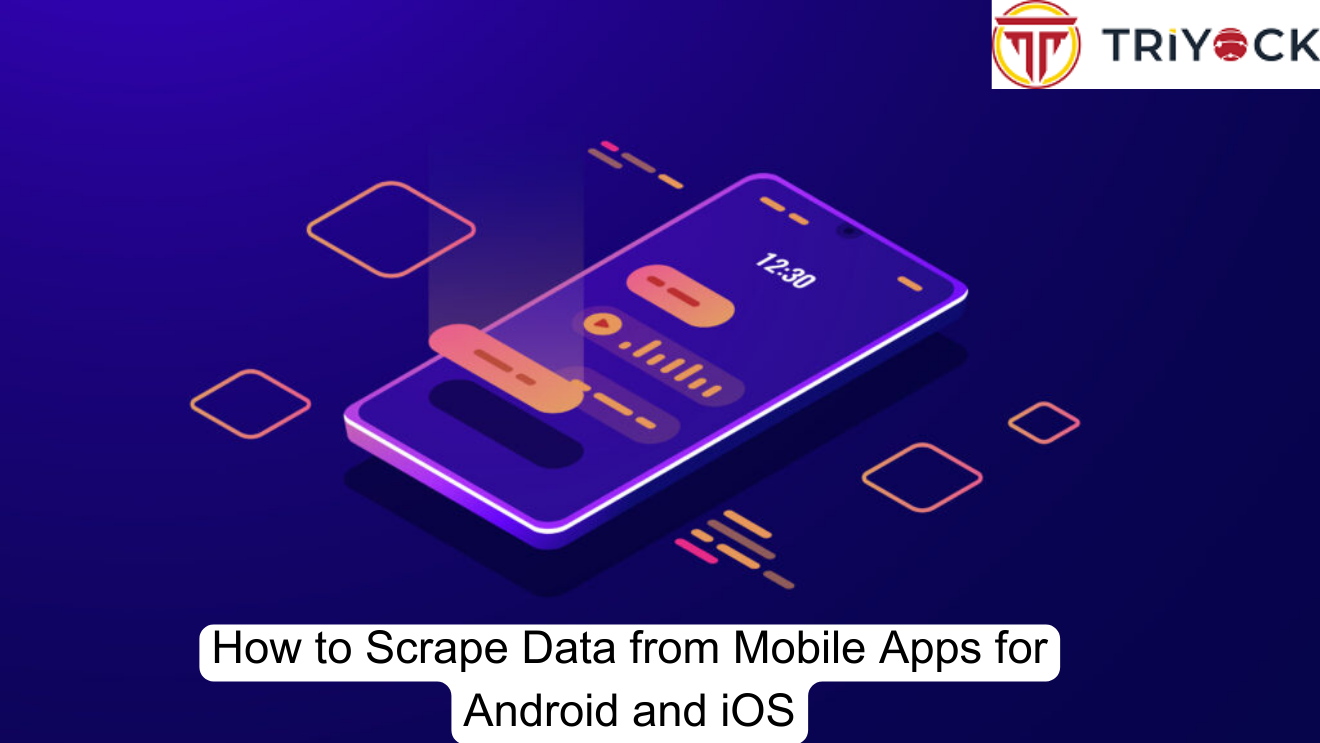
How to Scrape Data from Mobile Apps for Android and iOS
Simran Sarin
Introduction
In the rapidly evolving world of technology, mobile apps have become an integral part of our daily lives. From social media platforms to e-commerce applications, these apps generate vast amounts of data that hold immense value for businesses and researchers. Extracting this data through a process known as mobile app scraping has emerged as a powerful technique to gain valuable insights and stay ahead in the competitive landscape. In this article, we will explore the concept of mobile app scraping, delve into the motivations behind data extraction from mobile apps, and discuss the challenges that come with this practice.
What is mobile app scraping?
Mobile app scraping involves the automated extraction of data from mobile applications, enabling businesses and individuals to collect information such as user behaviour, product details, reviews, ratings, and more. Through specialised tools and techniques, developers and researchers can access structured data within apps, unlocking valuable insights for market analysis, user experience enhancement, and informed decision-making.
Why would you want to scrape data from mobile apps?
The motivations for scraping data from mobile apps are manifold and can vary depending on the specific goals and requirements of individuals and organisations. Some common reasons for mobile app scraping include market research, user behaviour analysis, data enrichment, and price comparison and review aggregation.
What are the challenges of scraping data from mobile apps?
While mobile app scraping offers numerous benefits, it also presents certain challenges that need to be addressed like data security and legal compliance, app structure complexity, IP blocking and captchas, and dynamic content.
Methods for Scraping Data from Mobile Apps
In the realm of mobile app scraping, various methods and approaches can be employed to extract valuable data from mobile applications.
Let's explore three common methods for scraping data from mobile apps: using a web scraping tool, utilising a mobile app scraping service, and manually scraping data.
- Using a web scraping tool
Web scraping tools are commonly used for extracting data from websites, but they can also be employed for scraping data from mobile apps. These tools work by simulating user interactions within the app, capturing the desired data, and exporting it into a structured format. Some web scraping tools offer specific features to cater to mobile app scraping, allowing users to automate interactions with mobile apps.
- Using a mobile app scraping service
Mobile app scraping services provide specialised solutions for extracting data from mobile apps. These services leverage advanced techniques and technologies to navigate through the app's structure, interact with its elements, and retrieve the desired data. Mobile app scraping services are typically offered by companies that specialise in data extraction and scraping.
- Manually scraping data from mobile apps
Manual scraping involves manually navigating through the mobile app, recording and extracting the desired data. This method requires manual interactions, such as tapping, scrolling, and capturing screenshots, to gather the required information. Manual scraping offers the most control over the data collection process, but it can be time-consuming and labour-intensive.
Advantages and Disadvantages of Each Method
# Web scraping tools are easy to use, but they may not be able to access all of the data in a mobile app.
Advantages:
Ease of use: Web scraping tools typically come with user-friendly interfaces and intuitive features, making them accessible to individuals with limited technical skills.
Quick setup: These tools often provide pre-built functionalities and templates, reducing the time required for initial setup.
Cost-effective: Web scraping tools are generally more affordable compared to other methods, making them a budget-friendly option.
Disadvantages:
Limited data access: While web scraping tools can extract data from mobile apps, they may face limitations in accessing certain app-specific data or content that is not readily available on the app's interface.
Compatibility issues: Apps may be built using frameworks or technologies that are not easily scrapeable, which can pose challenges for web scraping tools.
# Mobile app scraping services are more powerful, but they can be more expensive.
Advantages:
Powerful data extraction capabilities: Mobile app scraping services are specifically designed for this purpose, allowing them to access complex app structures and capture a wide range of data efficiently.
Comprehensive solutions: These services often offer additional features such as data cleaning, formatting, and customization to meet specific requirements.
Technical expertise: Mobile app scraping services employ professionals with expertise in data extraction and scraping techniques, ensuring efficient and accurate results.
Disadvantages:
Higher cost: Compared to web scraping tools, mobile app scraping services may come with a higher price tag due to the specialised nature of the service and the expertise required.
Dependency on third-party services: Using a mobile app scraping service means relying on an external provider, which introduces considerations such as data security, confidentiality, and reliance on the service provider's availability and reliability.
# Manual scraping is the most time-consuming method, but it gives you the most control over the data that you collect.
Advantages:
Full control over data collection: Manual scraping allows for precise selection of data elements, enabling customised and fine-grained data extraction.
Flexibility: This method permits adaptation to app updates or changes in structure, as the scraping process can be adjusted accordingly.
Disadvantages:
Time-consuming: Manual scraping can be a labour-intensive and time-consuming process, especially when dealing with large amounts of data or complex app structures.
Technical expertise required: Manual scraping demands a certain level of technical understanding and familiarity with the app's interface and structure, which may limit accessibility for individuals without the necessary skills.
How to Choose the Right Method for Scraping Data from Mobile Apps
Scraping data from mobile apps involves selecting the most appropriate method based on your specific needs, resources, and technical capabilities. Take the following factors into consideration:
Consider the amount of data that you need to collect
Evaluate the scale and complexity of the data you require. If you're dealing with a small amount of data or a limited number of app features, a web scraping tool or manual scraping may suffice. However, if you need to extract extensive and intricate data from complex app structures, a mobile app scraping service with advanced capabilities might be necessary.
- Consider the budget that you have available
Budget plays a crucial role in determining the method you choose. Web scraping tools generally offer a cost-effective solution, as they often come with affordable pricing plans. Mobile app scraping services, on the other hand, can be more expensive due to their specialised expertise and comprehensive offerings. Assess your budget and allocate resources accordingly, considering the value and importance of the data you seek to extract.
- Consider your own technical skills
Evaluate your own technical proficiency and familiarity with data scraping techniques. Web scraping tools typically have user-friendly interfaces and require minimal coding knowledge. If you have the necessary skills, manual scraping can offer maximum control over the scraping process. However, if you lack technical expertise, employing a mobile app scraping service might be the best option, as they can handle the complexities of data extraction more efficiently.
Conclusion
In the dynamic world of mobile apps, data is a valuable resource that can unlock countless opportunities for businesses and individuals alike. By scraping data from mobile apps, you can gain insights, fuel innovation, and make informed decisions. Throughout this article, we have explored different methods for scraping data from mobile apps, including web scraping tools, mobile app scraping services, and manual scraping.
Choosing the right method for scraping data from mobile apps requires careful consideration of factors such as the amount of data needed, budget constraints, and your own technical skills. Web scraping tools offer simplicity and affordability but may have limitations in accessing app-specific data. Mobile app scraping services provide advanced capabilities but come at a higher cost. Manual scraping allows for maximum control but demands time and technical expertise.
Ultimately, the choice depends on your unique requirements and resources. It is crucial to strike a balance between data needs, budget, and technical abilities. Moreover, always ensure compliance with legal and ethical guidelines, respecting app terms of service and user privacy. Join hands with Triyock BPO and learn more about mobile app data scraping today.



 Let’s get started
Let’s get started



 info@triyock.com
info@triyock.com